
The lesson is about the story of Pinocchio and the importance of truth and character development. Students will focus on the significance of telling the truth and the value of accepting responsibilities. They will also discuss the history of the original story written by Carlo Collodi, and they will learn about his background. Students will have the Disney version of the story read to them aloud in class. They will discuss some of the differences and similarities between the original story and the Disney version.
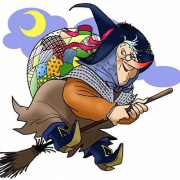
State and national curriculum standards require that students be exposed to the cultures and celebrations of other countries. Although Christmas is a very important holiday in both Italy and Puerto Rico, both lands place a special emphasis on the Feast of the Epiphany, celebrated twelve days later. Students will investigate the Italian gift-giver, La Befana.
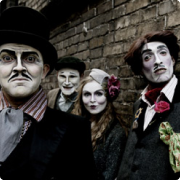
Students will be introduced to the characters of the Commedia dell’Arte. They will learn that all of the actors developed their own specific type of character, such as the Captain, the Pantaloon, the Doctor, or the Zanni. Since the actors wore masks, their roles were eventually called masks. Before going on stage, actors agreed on a basic plot and a general idea of how the play should be performed. The improvised or ad-libbed performances were never subtle. Students will make masks to perform part of the comedy in class.
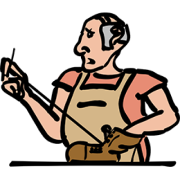
Most students are familiar with the Bugs Bunny cartoons. No matter who challenges Bugs, Bugs always outwits his adversary. Many Italian fairy tales offer similar plots. The hero is usually an underdog who has to face a superior adversary. The hero uses his quick wit against his opponents by appealing to their greed or desires. In this story of the “Cunning Shoemaker,” an astute cobbler befuddles a group of dangerous robbers by appealing to their avarice and exploiting their obvious lack of intelligence. Students will develop reading comprehension while appreciating the advantage of industrious behavior and a quick wit.
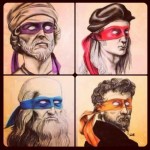
Students will be introduced to the Italian Renaissance masters Leonardo, Raphael, Donatello, and Michelangelo through the cartoon Teenage Mutant Ninja Turtles. The lesson starts with the cartoon characters and then introduces the Italian masters and their works to the students in four distinct lessons.
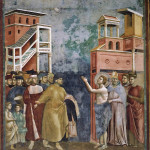
Students will learn about Giotto di Bondone. More than any one artist, he determined the course of painting in Europe. Giotto left the formula of Byzantine or Eastern Roman painting for the study of nature and abandoned the more abstract styles of the earlier period to paint more life-like works. Giotto sent a simple, perfect red circle made with a single stroke of his hand to the Pope. He had hoped that this would signify the quality of his work. Students will try to create a single, perfect circle using tempera paint on white construction paper that they make in class.
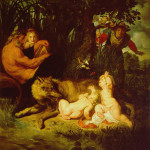
Students will examine the founding myth of ancient Rome. They will see why Roman culture developed such a strong “family-centered” culture. Students will contrast stories of sibling rivalry in ancient Greece, ancient Israel, and ancient Ireland to discover why sibling rivalry can be destructive. They will also examine ways to ease tensions and negotiate settlements.
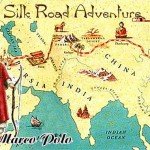
Students will examine the life of the famous explorer, Marco Polo. They will follow and chart his travels along the ancient Silk Route, and his travels throughout the realm of Kubla Khan. Students will learn the names of the ancient kingdoms of the Orient, east of Constantinople, along with the names of the modern nations in that area.
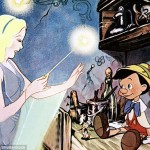
This lesson plan is about the story of Pinocchio and the importance of truth and character development. Students will focus on the significance of telling the truth and the value of accepting responsibilities. They will also discuss the history of the original story written by Carlo Collodi, and they will learn about his background. Students will have the Disney version of the story read to them aloud in class. They will discuss some of the differences and similarities between the original story and the Disney version.
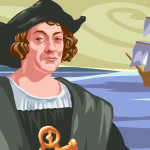
Students will examine when the Portuguese and Spanish explored alternate ways to reach Oriental spice markets and how Italian sailors, cartographers, and navigators offered their considerable skills as seamen to find a western route to the Indies. Cristoforo Colombo was the first Italian to cross the Atlantic. Giovanni da Verrazzano also made great voyages west, and was the first European to look upon the New Jersey coast and sail into what became the New York harbor.
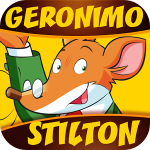
Students will read Geromino Stilton, the best-selling Italian story about a mouse that works both as a journalist and amateur sleuth. The books have sold more than 1.6 million copies in Italy since the first story was published by Edizione Piemme. Stilton is now closing in on JK Rowling’s best-selling Harry Potter series, whose four Italian editions sold a total of 2.7 million copies.Students will learn how to pick a good book from the library.
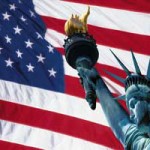
Students will be introduced to the concept of immigration. They will explore how Italian immigrants traveled across the Delaware River from Philadelphia to become migrant workers in Gloucester County. Many of the migrant workers eventually owned most of the prosperous farms in the area. Students will investigate the opportunities available to immigrants in the USA and the prosperity achieved by those who worked hard, ethically, and intelligently.
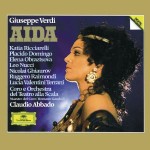
Students will examine Verdi’s opera Aida. They will examine the torn loyalties Aida must confront as she chooses between her love of nation and family and her love for the Egyptian general, Radames.
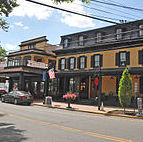
Students will be introduced to the concept of immigration. They will explore how Italian immigrants traveled across the Delaware River from Philadelphia to become migrant workers in Gloucester County. Many of these same migrant workers eventually owned most of the prosperous farms in South Jersey. Students will investigate the opportunities available to immigrants in the USA and the prosperity that met those who worked hard, worked ethically, and worked intelligently. They will see how the American dream came true to many of the Italian immigrants who settled in the farmlands of southern New Jersey.

Catherine DeAngelis, a woman of Italian American descent, paved the way for not only Italian Americans but for women of all backgrounds in a heavily male-dominated career. She pursued her dream of becoming a doctor with conviction despite her brief time of wondering if she should join the religious order of the Maryknoll Sisters.. Her compassion for others inspired her to develop many programs that would aid in bettering the lives of those who were in desperate need of health care.

In this lesson, students will learn about the history of Italy’s space program called Agenzie Spaziale Italiana. The students will also explore the important role that Italy has in developing new components that would improve and expand current living and laboratory areas for the International Space Station. The lesson requires students to research and create a timeline that outlines the evolution of Italy’s space programs and contributions. In groups, the students will be given a role to play in order to create a newscast that announces the breakthrough developments of Italy’s space projects. The students are encouraged to be as creative as possible and may even want to dress up or use props when they deliver their newscast to the class.
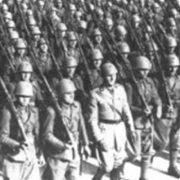
Legislation was passed in Italy via the Falco Laws, reversing freedom of religion. Benito Mussolini’s 1938 Manifesto of Italian Racism expelled Jews from all public services, the army and public schools. The lesson explores how courageous Italians defied the Fascist mandates at certain risk to their own lives and those of their loved ones, thus saving 40,000 Italian Jews.
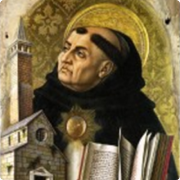
The theory of Natural Law is explored, highlighting the works of Cicero, Justinian, and Aquinas. Students identify a primeval concept of Natural Law in the play Antigone and then compare that concept to the words in the Declaration of Independence.
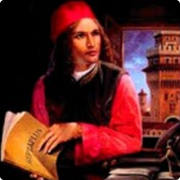
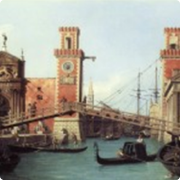
Students will explore the rise and fall of Venice as a center of Mediterranean trade.

The concept of Equality from Paul of Tarsus in 48AD, through Ulpian in the 3rd century AD, to Filippo Mazzei’s influence on George Mason and Thomas Jefferson is presented. Dr. Martin Luther King’s understanding of the concept is explored.
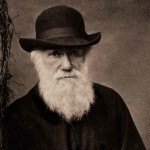
This lesson investigates the belief from the turn of the twentieth century that different groups of people evolve differently from one another. Students learn how this belief affected changes in the United States immigration laws. They also research and report how history has proved the theory to be egregiously erroneous.

The lesson investigates lynching and mob violence, focusing on the late-nineteenth-century lynching of Italian immigrants and the international ramifications.
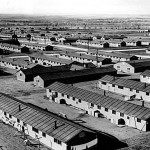
Students investigate the U.S. policy of detaining Italian nationals and other “enemy aliens” during World War II.

The lesson focuses on the symmetry found in late eighteenth-century art, music, law, and architecture, inter alia. It highlights how Jefferson viewed this symmetry and order as republican virtues influenced by Palladian architecture.
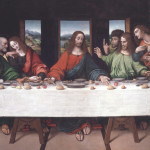
This lesson explores changes in art that took place from Medieval to the High Italian Renaissance to the late Italian Renaissance. Students will contrast four frescoes of The Last Supper.

In this lesson, students will be able to identify Fibonacci as one of the central influences to the widespread use of the Hindo-Arabic numerical system and of mathematical formulas used in western education and commercial applications. The lesson will inform students so that they may briefly describe Fibonacci’s life and accomplishments. They will be able to infer what modern mathematics may be like had Fibonacci not traveled to North Africa. Furthermore, it will help to develop connections between Fibonacci’s Sequence, the Golden Rectangle, tnhe Golden Spiral and various items in nature.
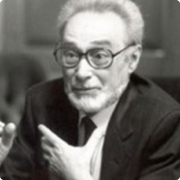
The unspeakable horror of the Nazi death camp at Auschwitz is given a voice in the poem SCHEMA, by this Italina Jewish concentration camp survivor. Students will explore the dehumanization of the individual and Primo Levi’s admonition of abuse and warning for the future.
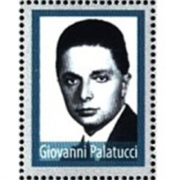
In this lesson students will learn about Italian citizens and public officials who ignored certain laws during the 1930’s and 1940’s to follow what they felt was a higher law. They took action to protect Jewish people from persecution under Nazi policies enacted in Italy as a result of Italy’s alliance with Germany. Students will learn how Italians tended to be less supportive of the extreme measures taken against the Jews by the Nazis.

Legislation was passed in Italy via the Falco Laws, reversing freedom of religion. Benito Mussolini’s 1938 Manifesto of Italian Racism expelled Jews from all public services, the army and public schools. The lesson explores how courageous Italians defied the Fascist mandates at certain risk to their own lives and those of their loved ones, thus saving 40,000 Italian Jews.
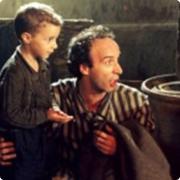
The Final Solution is one of the grimmest periods in human history. Racism leads to untold suffering and injustice. However, an example for optimism to rebel against such injustice can be found in the Italian national character’s value for humanism. Although an ally of Nazi Germany, Italians from all social strata resisted the capture and deportation of their countrymen, resulting in the survival of 80-85%, or 40,000 of the Jewish population of Italy.

The theory of Natural Law is explored, highlighting the works of Cicero, Justinian, and Aquinas. Students identify a primeval concept of Natural Law in the play Antigone and then compare that concept to the words in the Declaration of Independence.

The lesson explains the intellectual change that took place during the Renaissance from a society based on the unchanging eternal to a society that accepted change and actively sought to bring beauty and improvements into the world.

Students will explore the rise and fall of Venice as a center of Mediterranean trade.
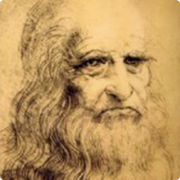
Students will participate in the Stream-of-Consciousness method, based on observations of Leonardo da Vinci’s work.

The concept of Equality from Paul of Tarsus in 48AD, through Ulpian in the 3rd century AD, to Filippo Mazzei’s influence on George Mason and Thomas Jefferson is presented. Dr. Martin Luther King’s understanding of the concept is explored.

This lesson investigates the belief from the turn of the twentieth century that different groups of people evolve differently from one another. Students learn how this belief affected changes in the United States immigration laws. They also research and report how history has proved the theory to be egregiously erroneous.
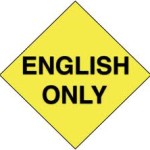
This lesson presents poetry that highlights the subtle and often overt ethnic stereotyping that can occur in classrooms.
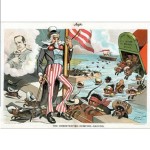
The lesson investigates immigration to New Jersey. It focuses on the encroachment of the market economy into the European peasantry at various times during the nineteenth century. Students explore various reasons for the emigrations to the United States of America.
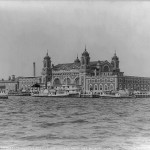
Reasons for Italian Immigration to New Jersey in 1890 and corresponding settlements are explored.

The lesson investigates lynching and mob violence, focusing on the late-nineteenth-century lynching of Italian immigrants and the international ramifications.

Students investigate the U.S. policy of detaining Italian nationals and other “enemy aliens” during World War II.

The lesson focuses on the symmetry found in late eighteenth-century art, music, law, and architecture, inter alia. It highlights how Jefferson viewed this symmetry and order as republican virtues influenced by Palladian architecture.
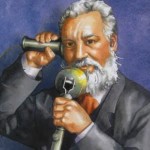
The controversies surrounding who invented the radio and the telephone are explored. Marconi and Meucci have great claims, but the students will research and decide.

This lesson explores changes in art that took place from Medieval to the High Italian Renaissance to the late Italian Renaissance. Students will contrast four frescoes of The Last Supper.
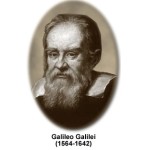
The lesson includes Galileo’s investigation of gravity. It emphasizes the shift from Aristotelian deductive reasoning to empiricism by changing the investigative question from why things fall to earth to how things fall to earth.
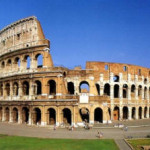
The lesson focuses on Vespasian’s desire to build a great monument to honor himself and to keep the plebeians amused and content at the games. The lesson also highlights the ineffectiveness of slavery in a society.
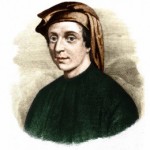
In this lesson, students will be able to identify Fibonacci as one of the central influences to the widespread use of the Hindo-Arabic numerical system and of mathematical formulas used in western education and commercial applications. The lesson will inform students so that they may briefly describe Fibonacci’s life and accomplishments. They will be able to develop connections between Fibonacci’s Sequence, the Golden Rectangle, the Golden Triangle, the Golden Star, and various pieces of art by famous Italian artists of the Renaissance. Furthermore, students will be able to critically analyze why artists use the Golden Ratio to help develop their works of art.
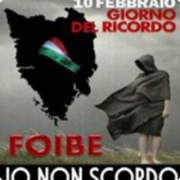
In this lesson, students will learn that during and after World War II nearly 15,000 Italian citizens were imprisoned, tortured, and thrown alive into deep, narrow ravines called Foibe by Yugoslav Communists. Many have called this an act of ethnic cleansing of the regions known as Istria and Dalmatia. Thousands of Italian men and women were also sent to gulags while hundreds of thousands more were forcibly expelled from Istria and Dalmatia. The Communists also confiscated their properties. Students will learn why Yugoslav Communist partisans worked to eliminate all Italians from Istria and Dalmatia, considering historical perspective of the regions. They will determine why the Italian government (both left and right) wanted to cover-up the Foibe massacres until 2005, and why they eventually changed their approach to the atrocities. Following this lesson plan, students will be able to extrapolate from their research and deduce why some historical narratives might look to hide various acts of brutality, ethnic cleansing, and genocide, while giving copious attention to other acts of brutality and attempts at ethnic cleansing and even genocide.
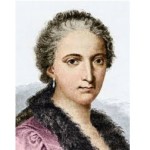
Maria Gaetana Agnesi was truly a great influence for future Italian and Italian American women for her inner strength and perseverance to achieve her goal. She was groomed by her father from the time she was a young girl to be a scholar. This was an unusual practice during the 1700s as most females were educated only through nunneries or monasteries. Her father requested her presence during many gatherings at his house where many intellectual men tended to gather to discuss subjects such as philosophy, mathematics, and the world around them. Maria became a scholar of 3 ancient languages and mathematics, specifically in Calculus. She developed one of the earliest textbooks with the help of Ramiro Rampinelli, her mentor. She was given international recognition for her work and was offered the status of professor at the University of Bologna. So why did she give up all her hard work and take a completely different path in life?

During a time of unrest throughout the world, Rita Levi-Montalcini challenged the face of adversity and achieved great status as a world-renown scientist. Rita, a half-Italian and half-Jewish woman, defied her father’s wishes to become a typical wife and mother. She graduated medical school and began her research and experimentation with the Brussels Neurological Institute during the time of World War II. Rita’s perseverance would eventually lead her to her discovery with colleague Stanley Cohen of the Nerve Growth Factor for which she was awarded several remarkable awards including the Nobel Prize. Rita has been honored many times as a famous Italian woman who has influenced many women in the area of science. In this lesson, students will have an opportunity to experiment in simulated nerve growth activities.
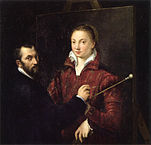
We have all heard of the famous Italian Renaissance artists such as Michelangelo and Campi. What most people do not know is that somewhere in the male-dominated world of artists was Sofonisba Anguissola. She was an Italian woman who showed a natural talent in painting and was encouraged to achieve greatness by her father. Though living during a time when women were very limited in what they were allowed to do, Anguissola defied this mindset and studied under Bernardo Campi. She pursued her love of art and further developed her talent as she traveled to Spain and held the position of court painter for King Phillip II. Her work was sent to Michelangelo for review, who remarked on her incredible talent. In this lesson, students will have an opportunity to experiment with different mediums to make a creative masterpiece of their own.
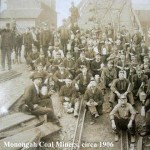
In this lesson, students will learn of a terrible accident in the coal fields of West Virginia in 1907 that involved hundreds of unfortunate Italian immigrants. At around 10:30 AM on December 6th, 1907, the peace of the small coal-mining town of Monongah, West Virginia was shattered by a double blast that shook buildings, knocked down horses and pedestrians, and left a layer of thick coal dust everywhere. The underground blast was heard as far as eight miles away. Two connected coal mines belonging to the Fairmount Coal companies had suffered two nearly simultaneous and catastrophic blasts deep underground. Within moments of the explosions, nearly all of the miners at work that day, at least 358 men and possibly hundreds more, were dead. It would be the worst mining accident in American history. In the lesson, students will have the opportunity to learn what happened in that terrible accident through readings and primary source photographs and draw conclusions about what happened and why. They will analyze the demographics of the miners involved, including the Italians, and make reasoned conclusions about why these particular people found themselves in this particular situation that day. The lesson will conclude with them demonstrating their understanding of the event and the significance of the role of the Italian immigrants and others who were involved. They will also have the chance to evaluate the contribution of those who gave their lives in this disaster in terms of any progress that may have come from it.
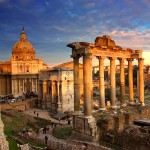
This lesson addresses the balances and compromises that must be struck between the need to excavate and study archaeological sites discovered in Italy and the need to minimize the disruption and expense that such investigations cause to the modern communities. Often current populations and businesses are active at the same locations as the archaeological sites in this increasingly urban environment. In this lesson, students will learn of one of these major archaeological sites located under a modern railroad station in modern Pisa. They will study the information and value of this site to history and how it had been excavated. They will also read about the disruption it has caused to the construction of the new railroad terminal. Next they will learn about new technologies that can be used to study the archaeological site while causing minimal disruption to modern-day activities at the site. As a culminating activity, students will role-play a situation in which a historical site has been discovered and the people involved in the site, both the archaeologists and the other people living and working at the site, have to work out how they can co-exist and all meet their own needs.
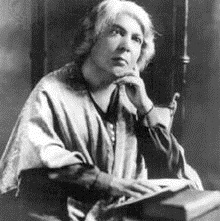
For centuries Italian writers have excelled in all areas of literature. Over the last one hundred years, four Italians have received the Nobel Prize for Literature. Outside of their native Italy, however, they are relatively unknown. This lesson’s goal is to familiarize students with these Nobel Prize recipients. One result of this lesson will be that the students will be able to identify Giosue’ Carducci, Grazia Deledda, Luigi Pirandello, and Dario Fo as Italians who have been awarded the Noble Prize in Literature. The students will also be able to identify the significance of the Nobel Prize. They also will be introduced to and learn to identify the writing styles, or genres, of these Italian writers. The focus activity of the lesson will involve the students using the jigsaw approach to explore the objective. The lesson’s assessment will ask the students to use higher-level thinking skills to demonstrate what they have learned about these Italians.

· © 2015-2025 NJ Italian Heritage Commission ·